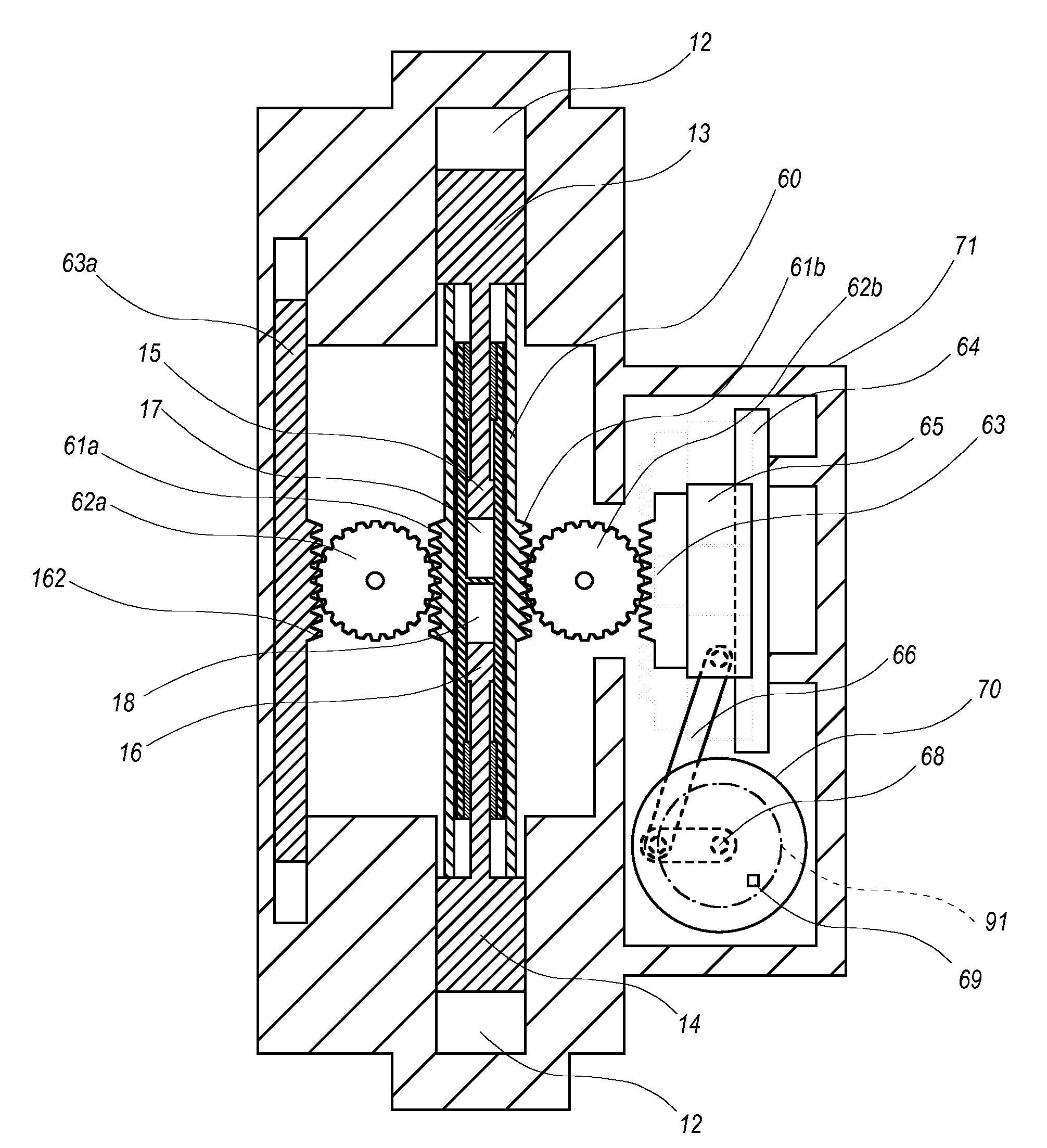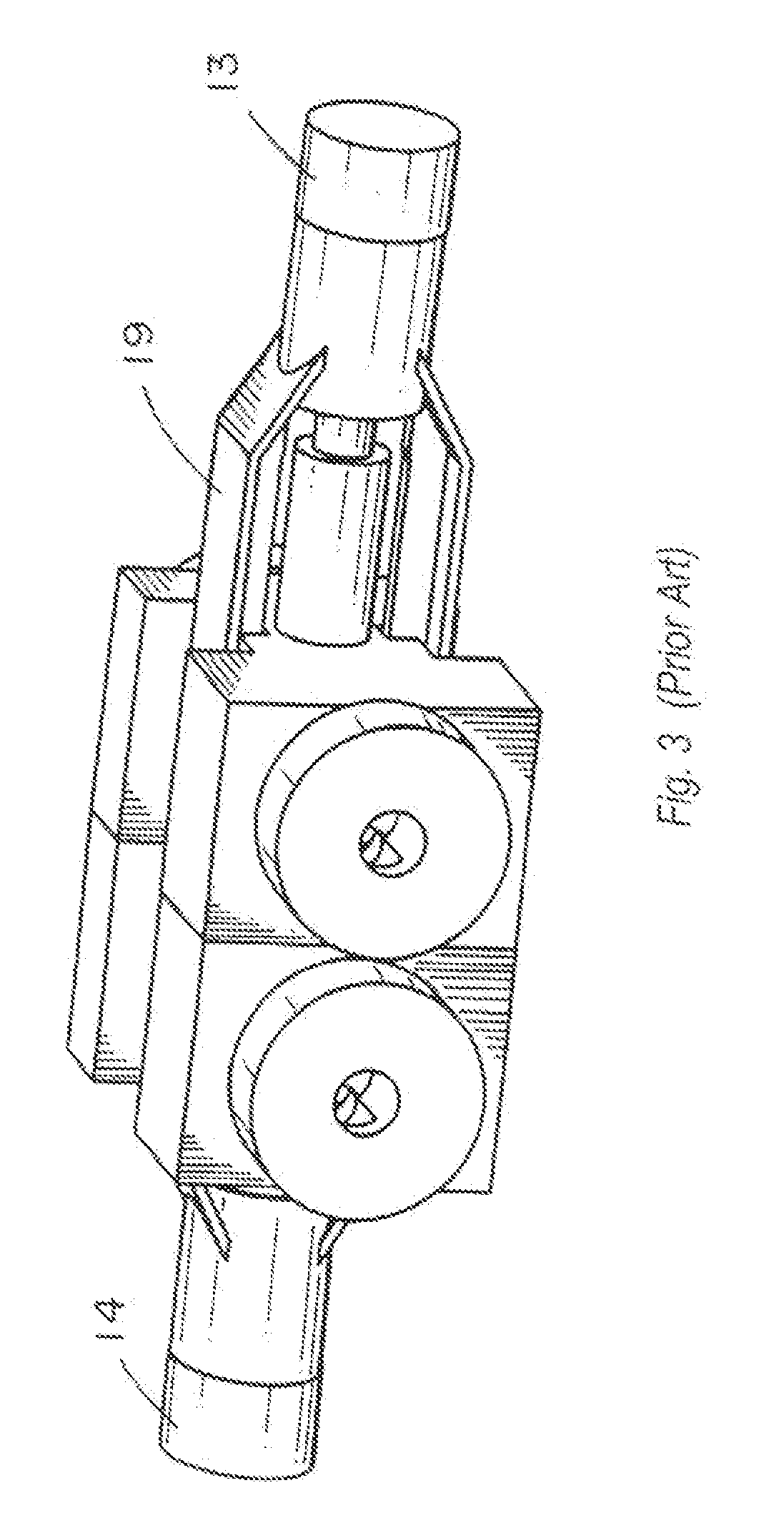Quasi Free Piston Engine
a free-flowing, piston engine technology, applied in the direction of positive displacement liquid engines, piston pumps, machines/engines, etc., can solve the problems of inability to stop the combustion piston at the correct position at tdc during the compression stroke, the effect of insufficient control can go beyond unacceptable performance and be destructive to the engine, and the difficulty of stopping the combustion piston at the correct position at tdc remains
- Summary
- Abstract
- Description
- Claims
- Application Information
AI Technical Summary
Benefits of technology
Problems solved by technology
Method used
Image
Examples
Embodiment Construction
[0040]A cross-sectional view of a preferred embodiment of a two-stroke quasi free piston engine of the present invention is presented in FIG. 6. The quasi free piston engine of FIG. 6 operates similarly to the free piston engine of FIG. 4. Opposed combustion pistons 13 and 14 slide within cylinders 12 that reside in block 71. Combustion pistons 13 and 14 respectively have axially and inwardly attached pumping pistons 15 and 16 which slide within pumping cylinders 17 and 18. Pumping cylinders 17 and 18 are directly analogous to the same numbered components of FIG. 2; their respective fluid connections, not as easily shown in FIG. 5, will be best understood with reference to FIG. 2. Pumping cylinders 17 and 18 respectively communicate with hydraulic lines 22 and 23 which contain valves 24a and 24b, which further connect with passage 25 through valve 32, which passage is further connected to the low pressure hydraulic fluid source (hydraulic lines, valves, and fluid source not shown in...
PUM
 Login to View More
Login to View More Abstract
Description
Claims
Application Information
 Login to View More
Login to View More - R&D
- Intellectual Property
- Life Sciences
- Materials
- Tech Scout
- Unparalleled Data Quality
- Higher Quality Content
- 60% Fewer Hallucinations
Browse by: Latest US Patents, China's latest patents, Technical Efficacy Thesaurus, Application Domain, Technology Topic, Popular Technical Reports.
© 2025 PatSnap. All rights reserved.Legal|Privacy policy|Modern Slavery Act Transparency Statement|Sitemap|About US| Contact US: help@patsnap.com



